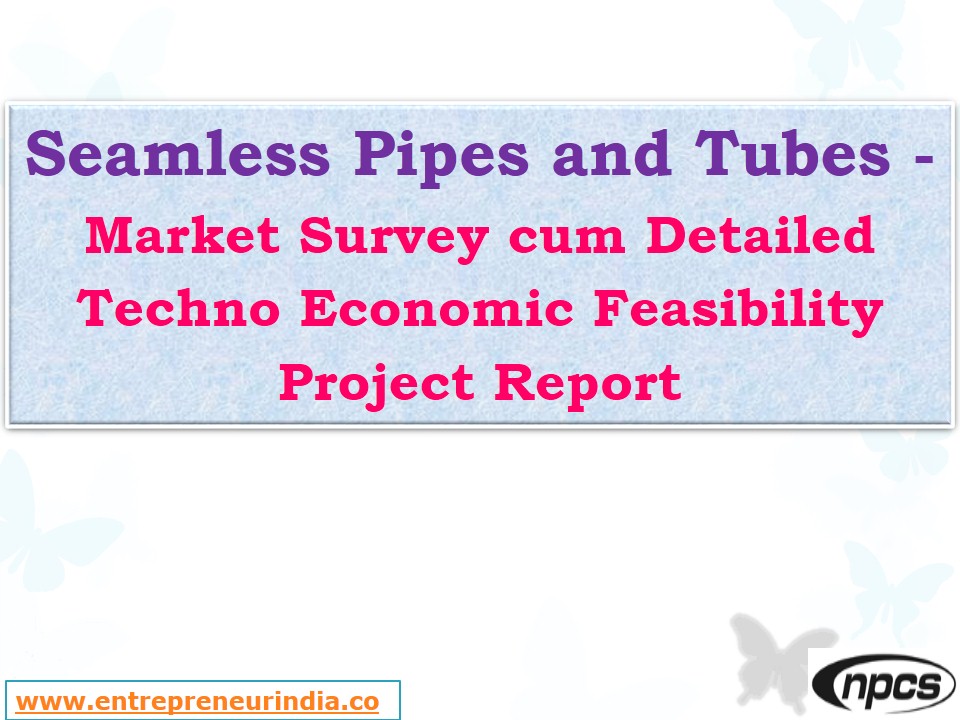
Seamless pipes and tubes have been widely adopted across multiple industries due to their strength, durability, and leak-proof nature. These components, which are free of any welds or joints, have been used in various applications such as oil and gas, petrochemicals, power generation, automotive, and construction. Consequently, the demand for seamless pipes and tubes has been rising steadily, making it a profitable manufacturing venture. Therefore, entrepreneurs looking for a scalable industrial project may find this business highly promising.
Seamless Pipes & Tubes Manufacturing: Industry Overview
The seamless pipes and tubes industry has experienced notable growth globally. Since these products have been favored for their superior mechanical properties, higher pressure resistance, and structural integrity, the manufacturing of seamless pipes and tubes has remained essential. Due to increased investments in infrastructure and energy, the need for high-performance piping systems has continued to expand. Moreover, the global focus on oil exploration, natural gas transmission, and refinery upgrades has propelled the growth of this market.
See Also : Artificial Sand Manufacturing Plant
Raw Materials & Machinery Required
To begin seamless pipes & tubes manufacturing, certain critical raw materials are required. Typically, solid round steel billets or hot rolled steel bars are used as input materials. These billets must be of high metallurgical quality to endure piercing and rolling without defects.
Machinery such as rotary hearth furnaces, piercing mills, plug mills, continuous rolling mills, re-heating furnaces, cooling beds, and finishing equipment has to be installed in a sequential layout. The equipment must be capable of operating under high temperatures and stresses to produce pipes with uniform wall thickness.
Seamless Pipe Production Process
A seamless pipes & tubes manufacturing unit has been operated through a systematic and highly controlled process. The key stages include:
1. Billet Heating and Piercing
Initially, steel billets are heated to a specified temperature using a rotary hearth furnace. Once heated adequately, they are transferred to a piercing mill, where a hole is made at the center using a piercer and plug system. This forms a hollow shell and initiates the pipe formation process.
2. Elongation and Rolling
The pierced billet is then processed in an elongation mill to increase its length and reduce wall thickness. It is further passed through rolling mills such as plug mills or mandrel mills. Through these mills, the diameter and wall thickness are further adjusted, providing the desired dimensional accuracy and surface quality.
3. Sizing and Cooling
After elongation, the tubes are passed through a sizing mill where final dimensions are achieved. The pipes are then uniformly cooled on cooling beds to reduce thermal stress and improve structural properties. Subsequently, straightening, cutting, and non-destructive testing are performed.
4. Finishing and Quality Control
Finally, pipes are subjected to end-facing, hydro-testing, heat treatment, and finishing operations. To ensure compliance with industry standards, quality tests such as ultrasonic testing, eddy current inspection, and dimensional checks are conducted. Furthermore, pipes may be pickled, painted, or galvanized depending on customer requirements.
Types of Seamless Pipes Produced
Different grades and sizes of seamless pipes and tubes are manufactured to serve various sectors. The classification is usually based on:
-
Material composition: Carbon steel, alloy steel, stainless steel
-
Application: Line pipes, boiler tubes, hydraulic pipes, precision tubes
-
Standard compliance: ASTM, DIN, API, IS, and other global norms
Since specific applications require pipes with precise tolerances and mechanical properties, custom dimensions and specifications are often requested by clients.
Applications of Seamless Pipes and Tubes
A wide range of industries has adopted seamless pipes & tubes due to their reliability and high-performance attributes. Major application areas include:
-
Oil & Gas Sector: Used in drilling, casing, and line pipes
-
Automotive Industry: Applied in fuel injection systems and hydraulic cylinders
-
Power Plants: Utilized in boiler tubes and heat exchangers
-
Chemical & Petrochemical Plants: Preferred for process piping
-
Construction: Used in structural and mechanical applications
Additionally, seamless tubes are used in aerospace, mining, shipbuilding, and heavy engineering equipment manufacturing, making this business widely scalable.
Advantages of Seamless Pipes Over Welded Pipes
Even though welded pipes are cheaper, seamless pipes offer numerous benefits that justify their higher price. Some major advantages include:
-
Higher strength and pressure handling
-
Better corrosion and stress resistance
-
Superior surface finish and dimensional tolerance
-
Longer service life and low maintenance
Because of these advantages, seamless pipes & tubes manufacturing has been increasingly preferred over traditional alternatives.
Business Setup & Investment Considerations
Before establishing a seamless pipes & tubes manufacturing plant, proper planning and feasibility studies should be carried out. Factors such as plant location, utility availability, raw material suppliers, and proximity to major markets must be evaluated.
Significant capital investment is required for land, machinery, building infrastructure, utilities, and workforce. Since the manufacturing involves high-temperature operations and complex machinery, trained manpower and adherence to safety protocols are crucial. In addition, licenses and certifications from authorities like BIS, pollution control boards, and industry regulators must be secured.
To optimize profitability, bulk procurement contracts with steel suppliers and long-term agreements with customers such as EPC contractors, oil refineries, and construction firms should be explored. Moreover, export opportunities must be assessed to tap into the international demand for high-quality seamless pipes.
Marketing & Distribution Strategy
Marketing of seamless pipes and tubes must be focused on reliability, quality, and compliance with standards. Since buyers usually belong to heavy industries, B2B marketing strategies involving trade exhibitions, industrial buyer meetings, and online product catalogs prove effective.
Moreover, distribution partnerships with regional dealers, stockists, and industrial suppliers can be used to expand reach. Quality certifications and ISO compliance must be highlighted to gain customer trust and credibility in domestic and global markets.
After-sales service, technical support, and customized product offerings are important to build long-term client relationships. Additionally, digital marketing and online platforms can be used to create brand visibility and generate inquiries from overseas markets.
Sustainability and Environmental Aspects
Although steel-based manufacturing is traditionally considered resource-intensive, sustainability measures can be integrated into the seamless pipes & tubes manufacturing process. Waste heat recovery systems, water recycling units, energy-efficient furnaces, and emission control technologies can be implemented.
Furthermore, scrap steel from rejected pipes and trimmings can be reused. Emphasis should be placed on complying with environmental norms and pursuing green certifications. This not only helps the business operate responsibly but also enhances its global competitiveness.
Future Outlook of Seamless Pipes Industry
The seamless pipes & tubes manufacturing sector has been expected to witness continuous growth due to infrastructure expansion, urbanization, and energy exploration. The development of hydrogen infrastructure, natural gas pipelines, and renewable energy installations has opened new avenues for demand.
Innovation in metallurgical processes, alloy developments, and smart manufacturing technologies such as Industry 4.0 will further enhance efficiency and product quality. Moreover, initiatives like Make in India, production-linked incentives (PLI), and export promotion schemes provide strong support for new manufacturing units in the country.
See Also : Industrial Investment & Technology
Conclusion
Seamless pipes & tubes manufacturing has emerged as a high-potential industrial business with vast applications across core sectors. Due to their unmatched strength, reliability, and leak-proof design, these products have been preferred globally. Although the setup requires substantial investment and technical infrastructure, the long-term benefits and profitability justify the commitment. By following best practices in production, quality control, marketing, and sustainability, a seamless pipe manufacturing plant can be established successfully and operated efficiently. Therefore, entrepreneurs aiming for a resilient and scalable industrial project can confidently venture into this field.



